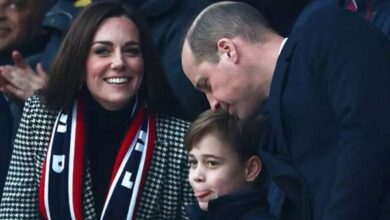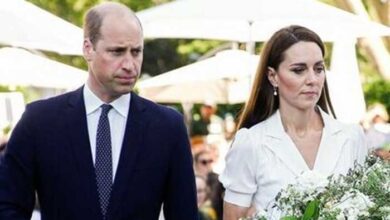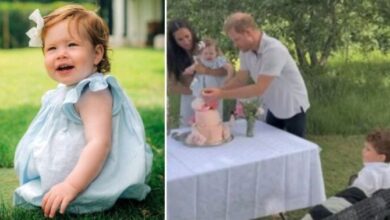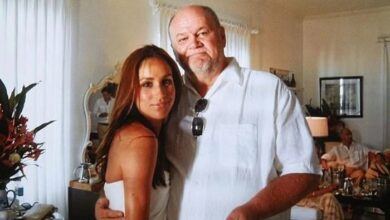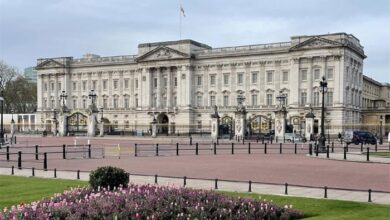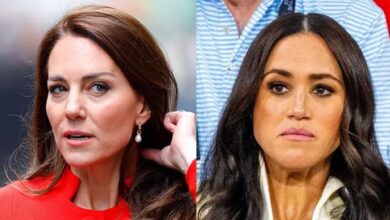The Real Reason Prince William and Kate Middleton Decided to Leave Kensington Palace

Prince William and Kate Middleton’s decision to leave Kensington Palace has been hailed as a historic and deeply personal choice.
While many speculated the couple’s move was prompted by a desire for more privacy or better accommodations for their growing family, it turns out the motivation behind their relocation was rooted in love and loyalty to the late Queen Elizabeth II.
According to renowned royal author Robert Jobson, in his latest biography Catherine, Princess of Wales, the Prince and Princess of Wales made the decision to move to Adelaide Cottage in Windsor primarily to be closer to Queen Elizabeth following the death of her husband, Prince Philip, in April 2021.
Their decision, Jobson claims, was a heartfelt gesture intended to support the Queen during one of the most challenging times of her life.
In his book, Jobson reveals that a Palace aide told him the move was motivated by Prince William’s understanding of the importance of being near the Queen during her final months.
The Queen, who had lost her beloved husband after more than seven decades of marriage, was grappling with the loss. As her grandson and future king, Prince William felt a strong sense of duty to be by her side.
Jobson shares that the decision to leave Kensington Palace was not taken lightly.
“William knew that his time with his grandmother was precious and that supporting her during those difficult months was a priority,” he writes.
“Both he and Catherine made the decision with the full understanding of the gravity of the situation.”
This move allowed William to be geographically closer to the Queen, ensuring that he could be available for both personal support and royal duties.
It also enabled him to fulfill his role as a future monarch by spending more time with the Queen, learning from her experience and receiving her guidance in preparation for his own future role.
Princess Kate played a significant part in this decision, standing by her husband and understanding the importance of being near the Queen.
Jobson explains that Catherine supported the move wholeheartedly, recognizing that for William, as the future king, being geographically closer to his grandmother was crucial, especially in her final months.
“Catherine understood that for William, it was not only a matter of personal connection with his grandmother but also his responsibility as a future king,” Jobson writes.
“She knew how important it was for him to provide support to both the Queen and his father, Prince Charles.”
The couple’s decision was also shaped by their mutual understanding of the responsibilities that come with their roles within the monarchy.
By being closer to Windsor, they could provide a comforting presence for the Queen and also maintain their duties as senior members of the royal family.
The move to Windsor did more than just provide emotional support for the Queen; it also strengthened the bonds between Prince William, Kate, and the wider royal family.
Jobson reveals that after their move, the couple were in regular contact with the Queen, speaking with her several times a week and visiting in person frequently.
Their proximity allowed them to be involved in family matters more closely, providing support not only to the Queen but also to Prince Charles as he began to take on more responsibilities in preparation for his eventual ascension to the throne.
In addition to their roles as future leaders of the monarchy, William and Kate’s move reflected their personal commitment to family.
Their frequent interactions with the Queen allowed them to stay connected and offer comfort during her final years, which were marked by the absence of Prince Philip and the challenges brought on by the COVID-19 pandemic.
Read More: Prince William and Royal Family Calls Prince Harry’s Bluff Amid His Apology Demands
While the move to Adelaide Cottage might have appeared to some as simply a logistical or lifestyle choice, Robert Jobson frames it as a deeply significant, historic decision.
In relocating from Kensington Palace, the Prince and Princess of Wales demonstrated their dedication to the monarchy and their personal sense of duty to the Queen.
The move also signified a shift in William and Kate’s roles as senior royals. As the Queen’s health began to decline and Prince Charles prepared for kingship, William and Kate’s decision to move closer to Windsor symbolized their readiness to step into more prominent roles within the monarchy.
Their actions showcased their commitment not only to supporting the Queen in her final months but also to the future stability and continuity of the royal family.
The decision to move to Adelaide Cottage was made with the future in mind. As senior royals, Prince William and Kate will play pivotal roles in shaping the monarchy for years to come.
Their proximity to Windsor allowed them to be close to the heart of royal operations during a critical time, while also giving their children—Prince George, Princess Charlotte, and Prince Louis—the opportunity to grow up in a more secluded and family-oriented environment.
As the monarchy continues to evolve in the wake of Queen Elizabeth’s passing, the decisions made by Prince William and Princess Kate to prioritize family and duty will undoubtedly influence their reign.
Their move to Windsor was not just a personal gesture for the Queen, but a reflection of their understanding of the responsibilities they bear as the future King and Queen of the United Kingdom.
Ultimately, their decision to leave Kensington Palace was a heartfelt, thoughtful gesture that allowed them to support the Queen during her final years, while also preparing themselves and their family for the next chapter in royal history.
It is a testament to their character, their sense of duty, and their deep love and respect for the late Queen Elizabeth II.
